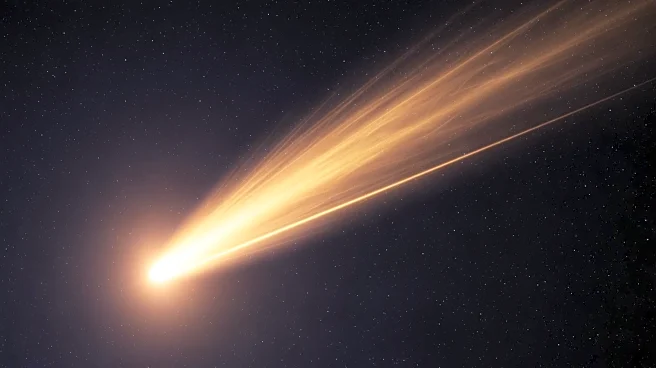What's Happening?
Comet C/2025 K1 (ATLAS) has surprised astronomers by surviving a close approach to the Sun and developing a rare golden glow. Discovered in May by the ATLAS telescope network, the comet reached its closest point to the Sun on October 8, coming within
31 million miles. Despite expectations that it would be torn apart, the comet emerged with a distinct golden color, observed by astrophotographer Dan Bartlett. The coloration is attributed to a lack of carbon-bearing molecules, which typically cause comets to appear green or blue.
Why It's Important?
The survival and unique coloration of C/2025 K1 provide valuable data for understanding cometary composition and behavior. The comet's resilience against solar forces challenges existing models of cometary disintegration and offers insights into the chemical processes occurring within cometary comas. This discovery may lead to a reevaluation of how comets interact with solar radiation and the factors influencing their appearance.
What's Next?
Astronomers will continue to monitor C/2025 K1 as it approaches Earth on November 25, providing further opportunities to study its composition and trajectory. Observations may reveal more about the comet's chemical makeup and the reasons behind its unusual coloration. The comet's visibility until early December will allow for continued analysis and comparison with other known comets.















